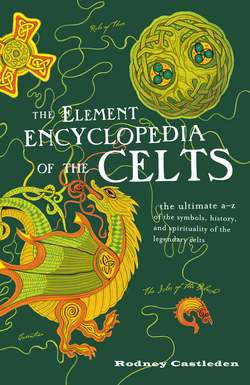Читать книгу The Element Encyclopedia of the Celts - Rodney Castleden - Страница 151
FORTIFICATIONS
ОглавлениеOn some of the hilltops there were large hillforts, surrounded by complex ramparts and palisades. Although called forts, they had several functions. They were stock enclosures and refuges in times of danger, they housed permanent settlements, and they were the focus of tribal gatherings and feastings (See Food and Feasting, Tribes). They probably also had a ceremonial and religious function, as well as acting as clear territorial markers—literally landmarks—that would help to create a sense of cohesion among people who were normally scattered across the landscape in separate homesteads.
The hillfort was usually laid out on the summit of a hill and surrounded by an earthwork that was intended to be clearly visible from below. The massive squared ramparts were faced front and back by rows of upright timbers tied by horizontal crossbeams. The earthen rampart was topped by a stout palisade, to defend the fighting-platform behind it, as at Hollingbury in Sussex. All the timber breastworks have disintegrated now, and the earth and rock they supported has slipped sideways, yet the ramparts can still be imposing. Maiden Castle in Dorset is the most impressive of the hillforts, with a complex mazelike entrance; it was the capital of the Durotriges tribe.
In Galicia, there were lots of defended homesteads built on hilltops. The presence of these castros distinguishes Galicia from the rest of the Iberian peninsula; they are the hallmark of its ancient Celtic past. The castro is a hilltop settlement, like a miniature hillfort, defended by multiple walls. Within, there is an ordered settlement, mostly with round stone houses built to a high density. Castro de Baroña is a fine example (See Dwellings).
